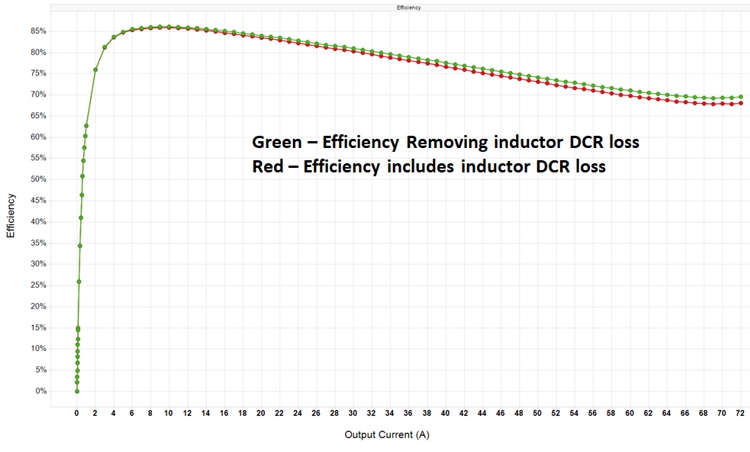SLVUBW7 May 2020
- TPS7H4001QEVM-CVAL Evaluation Module User's Guide
4.7 Efficiency
The efficiency of the 4-channel design was measured from a 0A to 72A load currents. Figure 12 shows a peak efficiency of Y% at 9A load and X% at 72A load. The measurement recordings for this test were done without instrument automation and without controlled DUT temperature. Therefore, self heating effects of the device are evident in the slight curvature of the plot.
 Figure 12. Typical Characteristics Efficiency
Figure 12. Typical Characteristics Efficiency